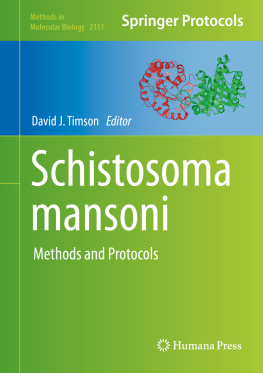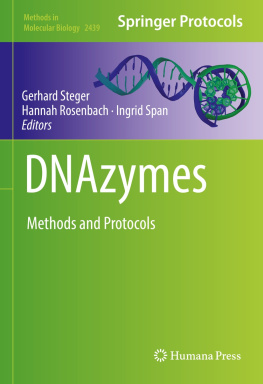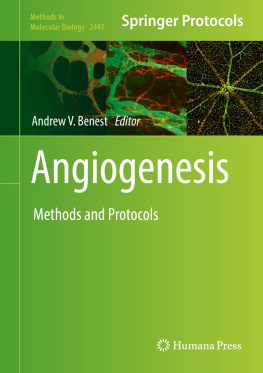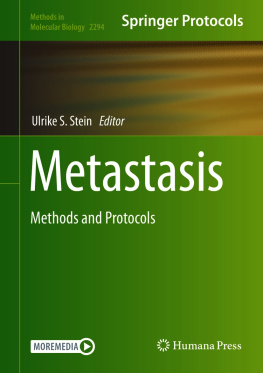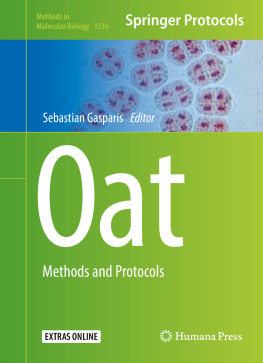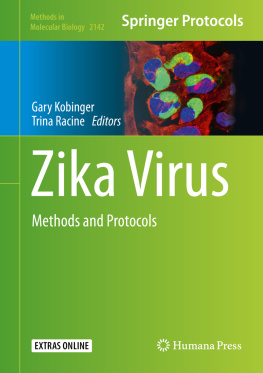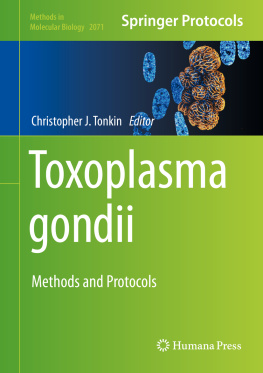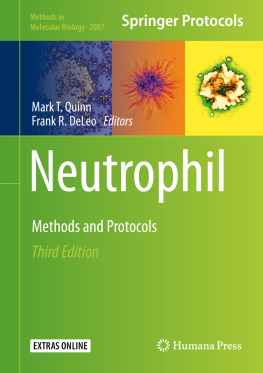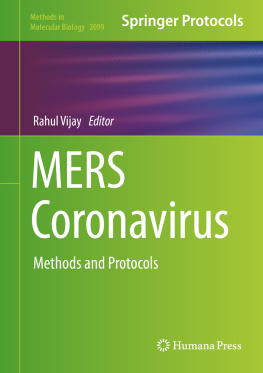David J. Timson - Schistosoma Mansoni: Methods and Protocols
Here you can read online David J. Timson - Schistosoma Mansoni: Methods and Protocols full text of the book (entire story) in english for free. Download pdf and epub, get meaning, cover and reviews about this ebook. year: 2020, publisher: Human, genre: Romance novel. Description of the work, (preface) as well as reviews are available. Best literature library LitArk.com created for fans of good reading and offers a wide selection of genres:
Romance novel
Science fiction
Adventure
Detective
Science
History
Home and family
Prose
Art
Politics
Computer
Non-fiction
Religion
Business
Children
Humor
Choose a favorite category and find really read worthwhile books. Enjoy immersion in the world of imagination, feel the emotions of the characters or learn something new for yourself, make an fascinating discovery.
- Book:Schistosoma Mansoni: Methods and Protocols
- Author:
- Publisher:Human
- Genre:
- Year:2020
- Rating:3 / 5
- Favourites:Add to favourites
- Your mark:
- 60
- 1
- 2
- 3
- 4
- 5
Schistosoma Mansoni: Methods and Protocols: summary, description and annotation
We offer to read an annotation, description, summary or preface (depends on what the author of the book "Schistosoma Mansoni: Methods and Protocols" wrote himself). If you haven't found the necessary information about the book — write in the comments, we will try to find it.
Schistosoma Mansoni: Methods and Protocols — read online for free the complete book (whole text) full work
Below is the text of the book, divided by pages. System saving the place of the last page read, allows you to conveniently read the book "Schistosoma Mansoni: Methods and Protocols" online for free, without having to search again every time where you left off. Put a bookmark, and you can go to the page where you finished reading at any time.
Font size:
Interval:
Bookmark:

For further volumes: http://www.springer.com/series/7651 For over 35 years, biological scientists have come to rely on the research protocols and methodologies in the critically acclaimed Methods in Molecular Biology series. The series was the first to introduce the step-by-step protocols approach that has become the standard in all biomedical protocol publishing. Each protocol is provided in readily-reproducible step-by step fashion, opening with an introductory overview, a list of the materials and reagents needed to complete the experiment, and followed by a detailed procedure that is supported with a helpful notes section offering tips and tricks of the trade as well as troubleshooting advice. These hallmark features were introduced by series editor Dr. John Walker and constitute the key ingredient in each and every volume of the Methods in Molecular Biology series. Tested and trusted, comprehensive and reliable, all protocols from the series are indexed in PubMed.
For over 35 years, biological scientists have come to rely on the research protocols and methodologies in the critically acclaimedMethods in Molecular Biologyseries. The series was the first to introduce the step-by-step protocols approach that has become the standard in all biomedical protocol publishing. Each protocol is provided in readily-reproducible step-by-step fashion, opening with an introductory overview, a list of the materials and reagents needed to complete the experiment, and followed by a detailed procedure that is supported with a helpful notes section offering tips and tricks of the trade as well as troubleshooting advice. These hallmark features were introduced by series editor Dr. John Walker and constitute the key ingredient in each and every volume of theMethods in Molecular Biologyseries. Tested and trusted, comprehensive and reliable, all protocols from the series are indexed in PubMed.

This Humana imprint is published by the registered company Springer Science+Business Media, LLC, part of Springer Nature.
The registered company address is: 1 New York Plaza, New York, NY 10004, U.S.A.
Schistosomiasis, infection with blood flukes from the genusSchistosoma, is the second most prevalent parasitic disease of humans. The vast majority of infected people live in poorer countries, and schistosomiasis remains a neglected tropical disease [1]. There is no effective vaccine against this disease, but there is a very effective drugpraziquantel. This drug is cheap and well tolerated by most patients. However, its molecular mechanism of action remains uncertain [2, 3].
Resistance to antimicrobials is well documented and considered to be a global threat to public health. Many antiparasitic drugs are becoming less effective as resistance is selected for. Unusually, there are no definitive reports of resistance to praziquantel. However, resistance has been generated in the laboratory [4]. It is widely accepted that praziquantel resistance is a question of when, not if; sooner or later it will appear. There are few other safe and effective drugs to treatSchistosomainfections. Thus, the emergence of sustained, widespread praziquantel resistance would be a disaster affecting some of the worlds poorest people.
The key to new treatments is to understand the biochemistry of the causative agenta know thine enemy strategy. Sadly, our understanding of invertebrate biochemistry lags behind that of higher mammals and even commercially important microbes such as yeasts. Thus, tools are needed to interrogate the cell biology, gene expression, signaling pathways, and enzymes of helminth pathogens such asSchistosoma mansoni. This basic science is the essential foundation on which novel therapies will be built. We need to understand the differences, both subtle and substantial, in the biochemistry of host and parasite.
This volume brings together some protocols for studyingS. mansoni. It begins with two short reviews on current drugs and drug discovery. There follows a series of methods to interrogate the cell biology of the worm, which are likely to be useful to any laboratory working with this parasite. We then move to some protocols to look at proteome-level changesessential approaches to understand global changes in response to new drugs. Then we have two bioinformatics chapters which demonstrate how to interpret the increasing amounts of sequence data available. Next, there is a series of chapters describing how to prepare and work with specific proteins fromS. mansoni.Finally, two chapters describe what, for many, are the end goals of research on this organism: one describing a drug screening method and the other how to test potential vaccine targets.
I thank my fellow authors for their contributions and hope this volume will be useful in the global efforts to understandS. mansonibetter.
Utzinger J, Becker SL, Knopp S, Blum J, Neumayr AL, Keiser J, Hatz CF (2012) Neglected tropical diseases: diagnosis, clinical management, treatment and control. Swiss Med Wkly 142:w13727. https://doi.org/10.4414/smw.2012.13727
Thomas CM, Timson DJ (2018) The mechanism of action of praziquantel: six hypotheses. Curr Top Med Chem 18 (18):15751584. https://doi.org/10.2174/1568026618666181029143214
Thomas CM, Timson DJ (2020) The mechanism of action of praziquantel: can new drugs exploit similar mechanisms? Curr Med Chem 27 (5):676696. https://doi.org/10.2174/0929867325666180926145537
Font size:
Interval:
Bookmark:
Similar books «Schistosoma Mansoni: Methods and Protocols»
Look at similar books to Schistosoma Mansoni: Methods and Protocols. We have selected literature similar in name and meaning in the hope of providing readers with more options to find new, interesting, not yet read works.
Discussion, reviews of the book Schistosoma Mansoni: Methods and Protocols and just readers' own opinions. Leave your comments, write what you think about the work, its meaning or the main characters. Specify what exactly you liked and what you didn't like, and why you think so.

